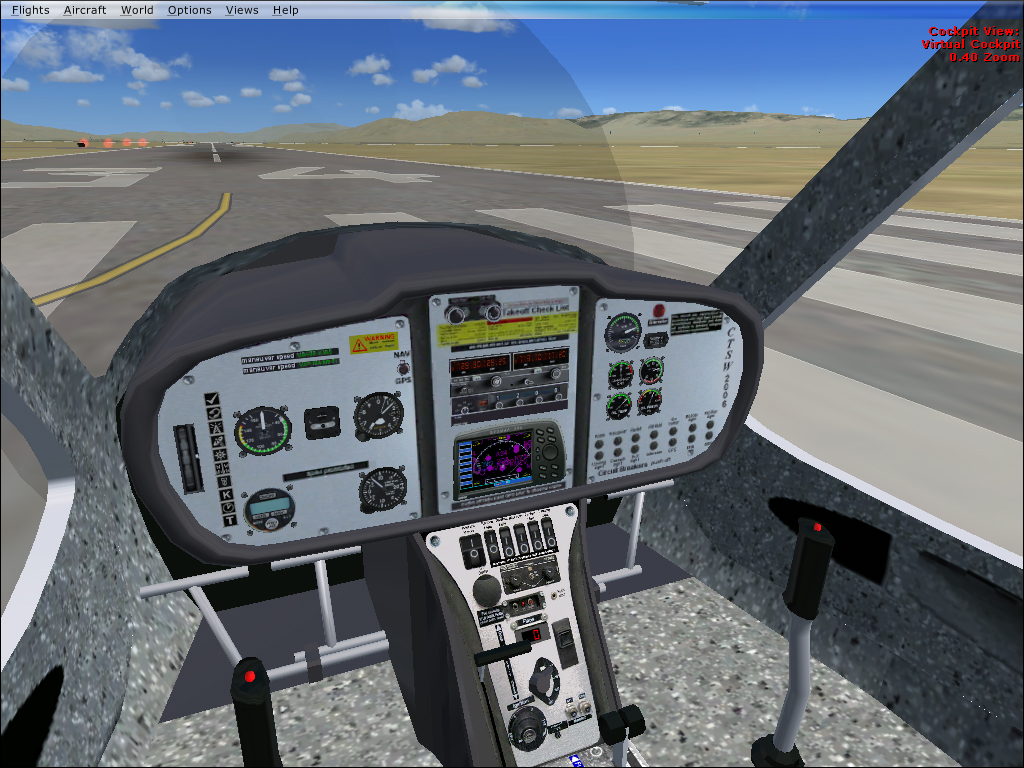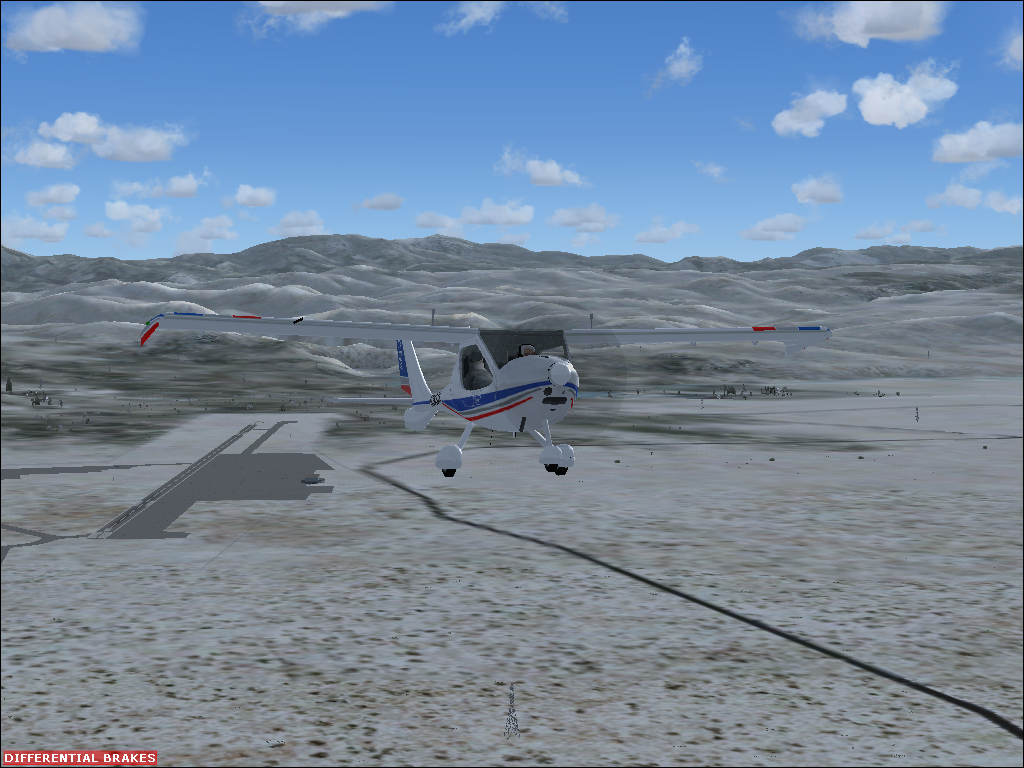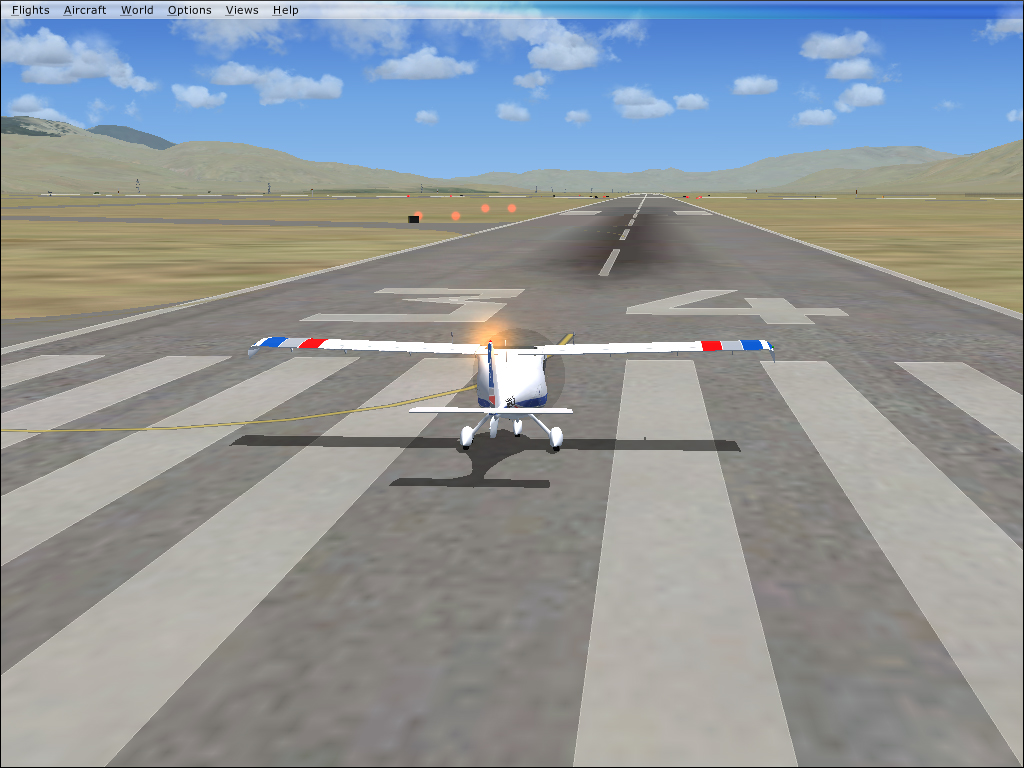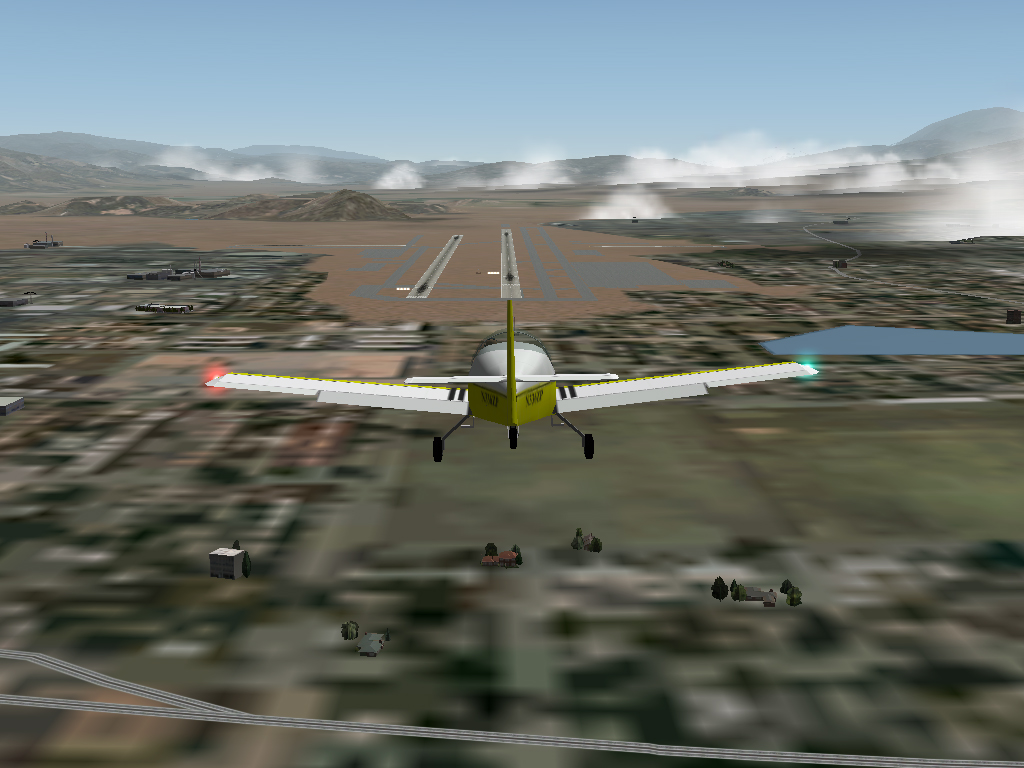
(click to enlarge)
Here we will look at both Microsoft “Flight Simulator X” using the Flight Designs CT LSA and the Laminar Research “X-Plane” simulator with the Zodiac 601 LSA.
Additionally, we will look at the Google Flight Simulator because it provides the best actual terrain from from satellite images also allowing roads and specific landmarks to be utilized for ground reference and pilotage.
Microsoft Flight Simulator X (FSX)

(click to enlarge)
Overall, the Microsoft Flight Simulator X (FSX) is a more popular mainstream game program but X-Plane is now the leader at more professional applications. FSX is easy to install and get going. However, Microsoft is not supporting it any more. It is a fine program as it is used by many. No light-sport airplanes are included with the original install except there is a trike as an aircraft and a Piper Cub. I actually use the FSX for the trike because it has a nice trike in the selection of aircraft.
I found a Flight Design CTSW with and old instrument panel I was able to download and install. It flies great but the CTLS I fly has a glass cockpit which is a completely different panel.

No simple modifications are allowed to the panel with the Microsoft FSX program. This is OK for those who fly more common airplanes such as a Cessna 172, where they have a couple of versions with different cockpits for common airplanes, but no customization for the new LSA and the various instrument panels.
I also found an ICON A5 and a Seamax LSA both which are amphibious for use with Microsoft Flight Simulator X. A very good “paid add on” model of the Cessna 162 Skycatcher is now available. LSA models are popping up all the time.
Unfortunately, because of the lack of LSA and the inability to modify the instrument FSX panels, the Microsoft program is not as useful for the quickly developing light-sport aircraft. However, most of the the airplanes designed nicely because it takes quite an effort to make a FSX model. Generally the FSX models are good quality.
Laminar Research X-Plane

Another popular flight simulator by Laminar Research is called X-Plane. This is where you can build your own plane, modify an existing planes performance and handling, or change an instrument panel to be what you want. This is more adaptable for building a fleet of LSA and there are a variety of models becoming available all the time. Overall, the program is a little more challenging to set up and figure out, but I was able to buy Zodiac 601 X-Plane airplane model for about $20 and modify the instrument panel to match the actual aircraft I was flying. Now I have a useful tool for utilizing X-Plane and the Zodiac I actually fly. There are more LSA for the version 10 so this is what I use. There is version 11 but unfortunately there are not as many LSA airplanes for this and the version 10 airplanes are not compatible to version 11. So overall figure out what aircraft you want to use and get the version of X-Plane that supports that version. As of this writing, I use the Sport Cruiser airplane model in X-Plane 10 to best simulate my Sling 2 with a glass panel.
Now all the basic airplane maneuvers could be accomplished with the flight simulator with required throttle settings, performance maneuvers, approaches/landings and flights to new airports. Commercial versions of X-Plane with specific hardware are used for FAA approved “Flight Training Devices”.
Students, pilots, instructors, “want to be pilots” and virtual aviators can now easily add a flight simulator to your kit of flight tools. Flight simulators are fun, great as an aid in learning to fly and stay current when you cannot fly the real airplane.
